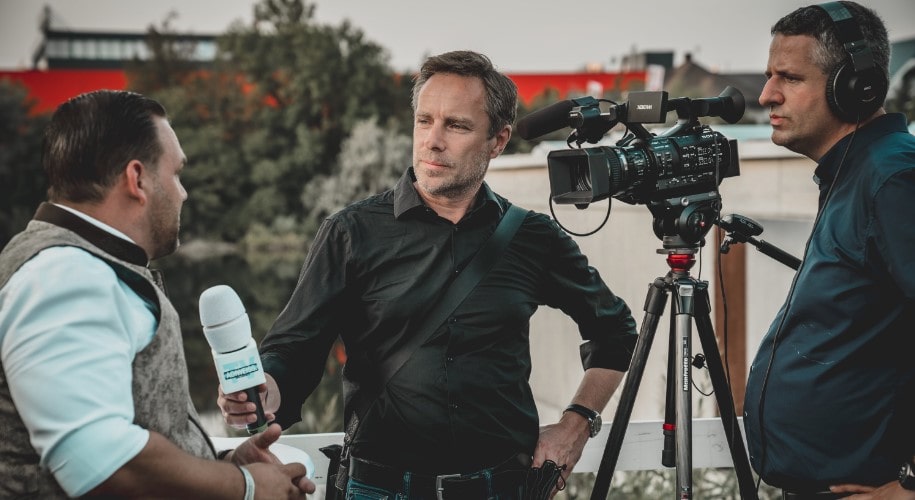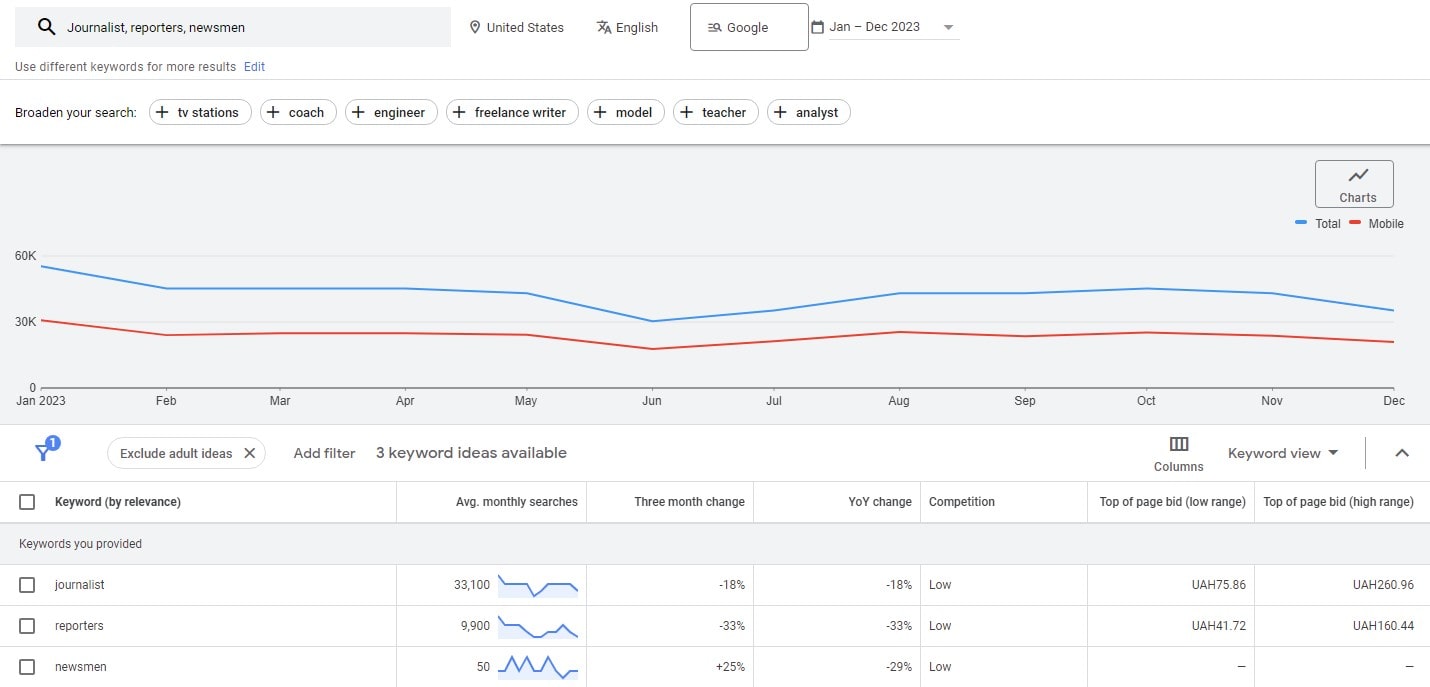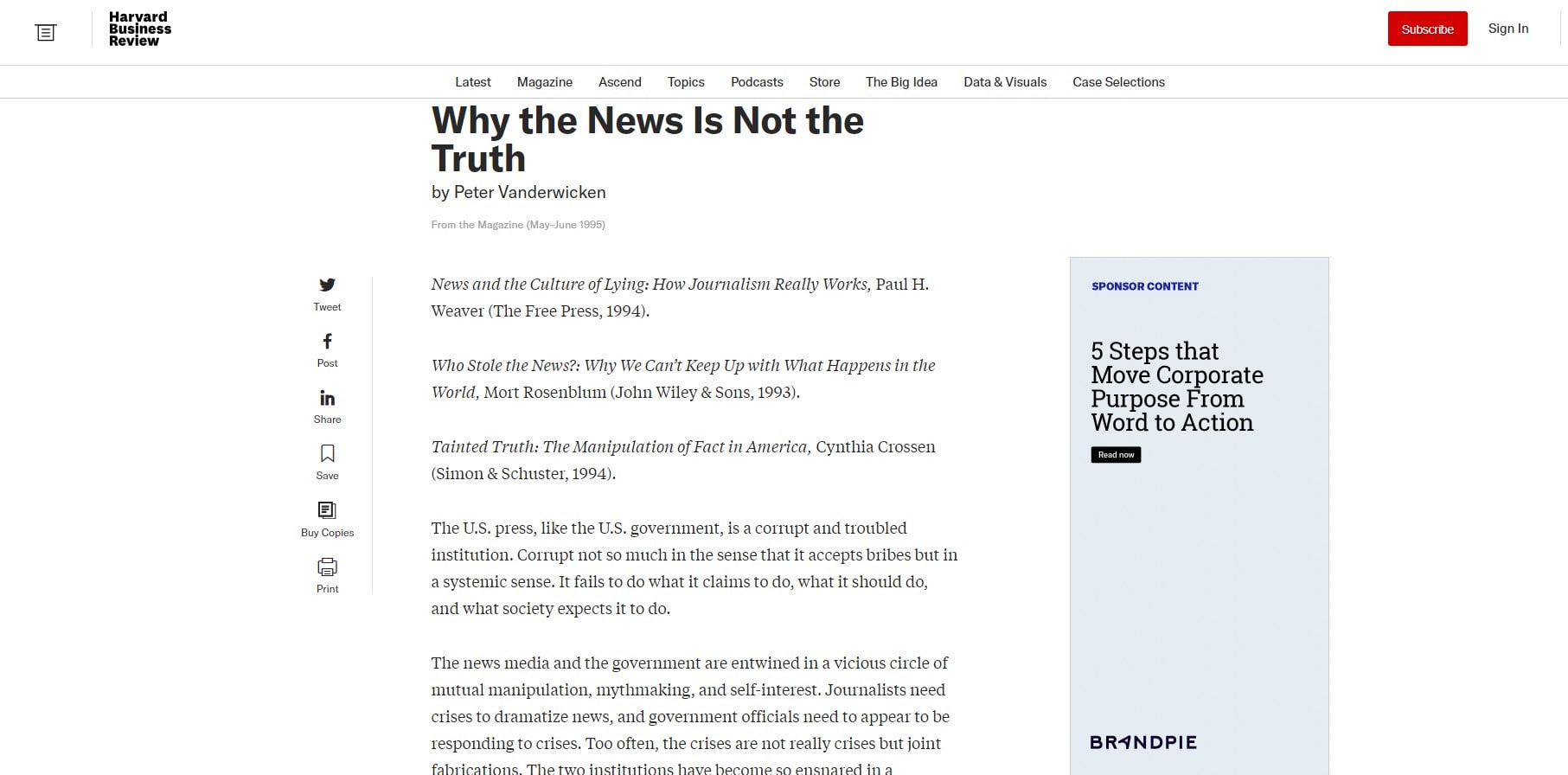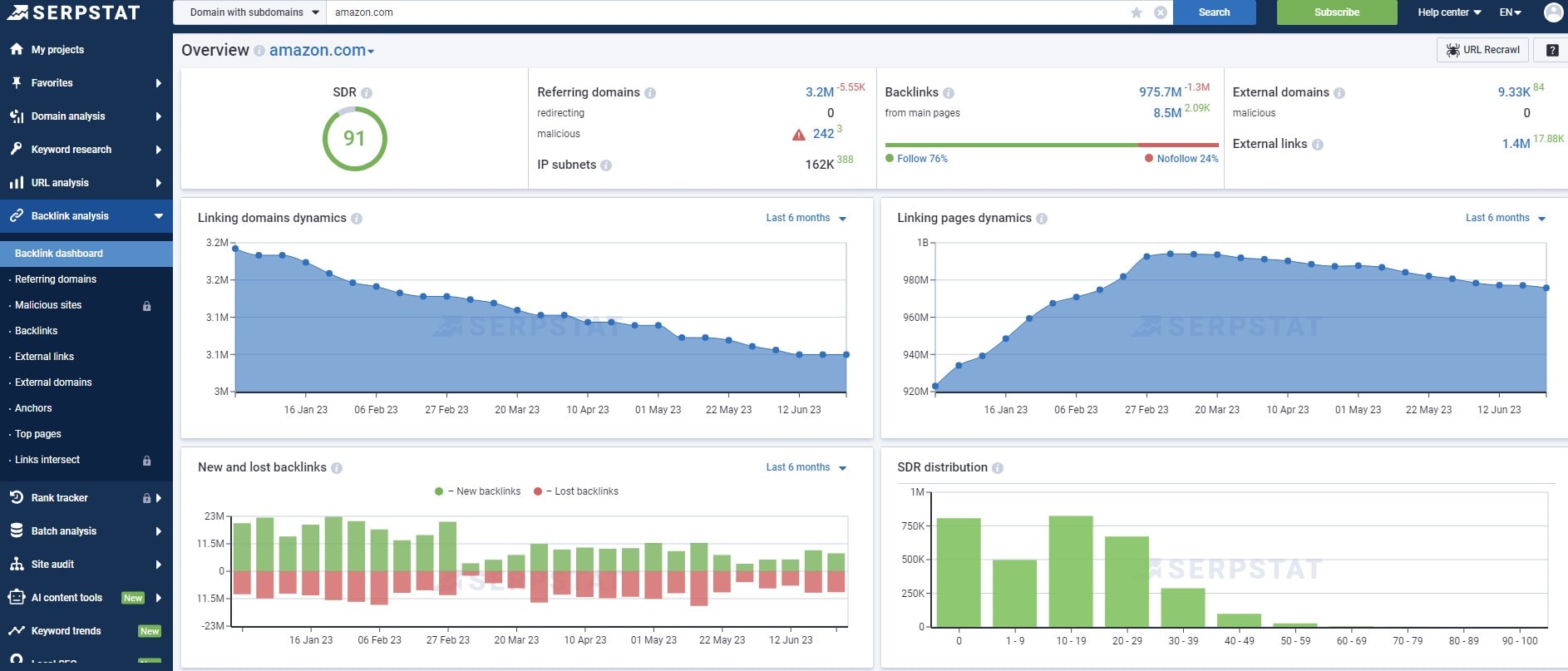In the bustling hub of digital journalism, mastering SEO is not just beneficial—it’s essential. Online journalists must use SEO to boost their story’ visibility and effect. This article explores SEO and how it may make an article a news sensation for journalists.
Key Aspects of SEO for Journalists:
- Crafting keyword-rich headlines
- Utilizing meta descriptions effectively
- Incorporating relevant links and multimedia
SEO, at its core, is about making news pieces easily discoverable. A mix of art and science, writers utilize SEO strategies to boost their stories’ search engine rankings. News delivery should engage and inform a wider audience, not only drive clicks.

For sports journalists, for instance, SEO involves embedding popular match keywords, while financial reporters use market trends to enhance their articles’ findability. Understanding that every specialty has its own SEO approach helps boost a journalist’s digital influence.
Plerdy’s tool helps in this shifting context. The entire user behavior analysis solution boosts conversion rates and SEO. At Plerdy, journalists may A/B test or analyze SEO data to give their articles a digital edge.
What is SEO, and What Does SEO for Journalists Mean?
In the ever-changing online news landscape, journalists require SEO to market digital material. Journalists must master SEO to make news pieces relevant and accessible for search engines.
Key SEO Strategies for Journalists:
- Integrating trending keywords within articles.
- Utilizing engaging, SEO-friendly headlines.
- Embedding multimedia and internal links for enhanced engagement.
SEO for sports journalism involves using match highlights and athlete names as keywords to attract sports fans.Political journalists, on the other hand, leverage current affairs and trending political figures to enhance their news articles’ searchability.
To engage and expand news content, journalist SEO uses outstanding storytelling and keyword placement. As journalists use SEO, their stories become information lighthouses that guide readers through the digital information maze. Journalism and SEO have blended to create high-quality, visible content.
Explanation of SEO and its Relevance for Journalists

In the bustling digital age, SEO has become a journalist’s compass, guiding their stories to the forefront of public attention. For journalists, mastering SEO isn’t just a skill—it’s a necessity to cut through the online noise. By integrating SEO strategies, a journalist transforms their articles into lighthouses, shining brightly in the vast sea of information.
Consider these key points:
- SEO boosts a journalist’s work beyond traditional boundaries, reaching wider and more diverse audiences.
- It ensures that impactful stories don’t just whisper into the void but resonate loudly in the right circles.
- Through SEO, a journalist’s insights and revelations gain the visibility they deserve, influencing public discourse and shaping opinions.
For journalists, SEO is like tailoring a message to echo in the halls of the digital world. It’s not about manipulating words but about crafting content that resonates, engages, and informs—keeping the essence of journalism alive while embracing the digital revolution.
Understanding Search Engine Algorithms
Diving into the mechanics of search engine algorithms, journalists find a treasure trove of SEO strategies to elevate their content. These algorithms, intricate and ever-evolving, are the gatekeepers of digital visibility. For a journalist, understanding these algorithms is akin to an artist mastering their palette; it empowers them to paint their stories onto the canvas of the web with precision and impact.
Key insights include:
- Algorithms prioritize content relevance, making SEO a crucial tool for journalists to ensure their stories meet these criteria.
- They reward engaging, authoritative content, aligning well with the journalistic ethos of credibility and depth.
- By decoding these algorithms, journalists can craft stories that resonate with both readers and search engines.
In this dance of digits and words, the journalist becomes both a storyteller and a strategist, weaving SEO into narratives in a way that captivates both the human mind and the digital algorithm. This skill elevates their work, ensuring it not only informs but also reaches and impacts a broader audience.
Keyword Research for Journalists

In the world of digital storytelling, keyword research is the compass that guides journalists through the SEO landscape. It’s more than just picking words; it’s about understanding the pulse of the audience. A journalist armed with the right keywords can bridge the gap between compelling narratives and digital visibility.
Here’s what stands out:
- Keyword research allows journalists to tap into current trends, aligning their stories with what readers are actively seeking.
- It’s not just about high-volume keywords; relevance and context are king, ensuring that the journalist’s content is both discoverable and engaging.
- Tailoring stories around specific keywords can dramatically boost a journalist’s reach, making their content a go-to resource for readers.
SEO is now required for journalists. Their strategic decision lets them write tales that search engines and audiences like. Keyword research-savvy journalists write stories and spread them around the internet world.
Optimizing Headlines for Search Engines
In the digital age, a headline is more than a story’s introduction; it’s the beacon that guides readers through the vast sea of online content. For a journalist, mastering the art of headline optimization is a critical aspect of SEO. It’s where the craft of compelling writing meets the science of search engine algorithms.
Consider these nuances:
- Crafting SEO-friendly headlines involves balancing keyword richness with reader engagement, ensuring that the journalist’s work stands out in search results.
- Headlines should spark curiosity while incorporating key search terms, a strategy that helps journalists’ articles gain prominence in a crowded digital space.
- Effective headlines act as hooks, drawing readers into the journalist’s narrative while satisfying the criteria set by search engines.
This approach turns a journalist’s headline into a dual-purpose tool – captivating the reader while catering to the technicalities of SEO. It’s a skill that transforms their stories from hidden gems to shining beacons in the digital news landscape, ensuring that their vital narratives are both found and read.
Structuring Articles for Better SEO

In the tapestry of digital journalism, structuring articles for SEO is akin to weaving intricate patterns that catch the eye. A journalist adept in this art ensures that each thread – every paragraph, heading, and sentence – contributes to a compelling, SEO-rich narrative.
Key elements include:
- Crafting an engaging introduction that seamlessly incorporates primary keywords, setting the stage for both the reader and search engines.
- Employing subheadings effectively to break text into digestible sections, each subtly infused with relevant keywords.
- Balancing the narrative flow with SEO needs, ensuring that the article remains reader-friendly while being search engine optimized.
For a journalist, this is more than mere structuring; it’s an orchestration of words where SEO plays first violin, guiding the rhythm and flow. This strategic approach transforms their articles into magnetic pieces, attracting readers and search engines alike. Each piece of storytelling and optimization is purposeful, ensuring the journalist’s voice is heard and reverberated across the digital world.
Utilizing Meta Descriptions and Tags
In the realm of digital journalism, the power of meta descriptions and tags is akin to a hidden melody that harmonizes the song of SEO. A journalist, adept in their use, can significantly enhance the visibility and appeal of their articles. These elements act as the whispering ambassadors of content, enticing readers from the search results page.
Vital aspects include:
- Crafting concise, compelling meta descriptions that encapsulate the essence of the article while weaving in key SEO terms.
- Utilizing tags strategically, aligning them with the journalist’s core topics and keywords, creating a lattice of relevance and accessibility.
- Balancing keyword integration with engaging language in meta descriptions, ensuring they captivate potential readers and satisfy search engine algorithms.
For journalists, mastering these SEO elements is akin to perfecting the art of first impressions. It’s about creating that initial spark of interest, enticing readers to delve deeper into their stories. In the bustling online world, where attention is a coveted currency, a well-crafted meta description and thoughtful tags are a journalist’s allies in capturing and retaining this valuable asset.
Integrating Multimedia Content for Enhanced Engagement

In today’s fast-paced digital world, a journalist’s story becomes more compelling when it’s a tapestry woven with various multimedia elements. Integrating multimedia not only enhances engagement but also bolsters SEO efforts significantly. This multifaceted approach caters to diverse audience preferences, making the content more accessible and shareable.
Key strategies include:
- Embedding relevant images and videos to complement and enrich the narrative, thereby increasing the time readers spend on the page, a positive signal for SEO.
- Utilizing infographics and interactive elements to present complex information in an easily digestible format, thereby catering to the visual learner.
- Ensuring all multimedia content is optimized for search engines, with appropriate tagging and descriptions, enhancing the journalist’s SEO footprint.
For journalists, embracing multimedia is not just about adding visual appeal; it’s a strategic move to engage a wider audience, cater to different learning styles, and improve the overall reach and impact of their stories in the digital space. It’s a harmonious blend of storytelling art and SEO science, creating a more immersive and engaging reader experience.
The Importance of Mobile Optimization
In the digital era, where smartphones are the primary gateway to information, mobile optimization has become a cornerstone for any journalist keen on SEO. This shift towards mobile-first browsing necessitates a rethinking of content presentation and accessibility.
Here are some critical aspects:
- Ensuring that articles are responsive and adapt seamlessly to various screen sizes enhances user experience, a key factor in SEO ranking.
- Optimizing loading times for mobile devices is crucial, as speed is a significant determinant in retaining the mobile audience’s attention.
- Implementing a mobile-friendly layout with easily navigable features and readable text sizes is essential for keeping the mobile reader engaged.
For journalists, mobile optimization isn’t just about reaching a broader audience; it’s about connecting with readers in their most accessible space – their smartphones. This approach not only boosts SEO but also signifies a commitment to delivering quality content in the format that resonates most with today’s digital consumers. It’s a strategic alignment with audience consumption habits to make the journalist’s work as effective on a small screen as on any other media.
Link Building and Its Significance

In the intricate web of digital journalism, link building stands as a vital artery, pulsing SEO lifeblood through a journalist’s work. This SEO strategy is more than just connecting dots; it’s about weaving a network of credibility and authority. For journalists, link building is not just an SEO tactic, but a badge of trust and relevance in their digital storytelling.
Crucial elements include:
- Garnering inbound links from reputable sources, which signals to search engines the trustworthiness and authority of the journalist’s content.
- Creating compelling, shareable content that naturally encourages other sites to link back, amplifying the journalist’s reach and impact.
- Engaging in ethical link-building practices, avoiding shortcuts that could harm the journalist’s reputation and SEO efforts.
For a journalist, effective link building is akin to expanding their influence in the digital world. The goal is to create content that is so compelling that people link to it, enhancing SEO and ensuring the journalist’s voice is heard across the digital world. This strategy boosts the journalist’s credibility and storytelling with SEO.
Measuring SEO Success with Analytics
In the digital narrative of journalism, measuring SEO success is not just about numbers; it’s about understanding the story behind them. For a journalist, analytics serve as a compass, guiding their SEO journey towards greater impact and reach. These metrics are the silent narrators of an SEO strategy’s effectiveness, providing insights that shape future storytelling.
Key areas to focus on include:
- Tracking website traffic to gauge the reach and engagement of a journalist’s content.
- Analyzing keyword rankings to understand how well the journalist’s content is performing in search results.
- Assessing backlink quality and quantity, which reflects the authority and credibility of the journalist’s work.
For journalists, delving into analytics is like peering through a lens that brings the broader impact of their work into focus. It’s a crucial part of the SEO process, turning data into actionable insights that empower journalists to refine their craft, align with their audience’s interests, and enhance their storytelling in the ever-evolving digital landscape.
Adapting to SEO Changes and Trends
In the ever-shifting landscape of SEO, a journalist’s adaptability is akin to a sailor navigating changing seas. Staying abreast of SEO trends and changes is not just about keeping up; it’s about leveraging these shifts to enhance storytelling and reach. For a journalist, this means continuously refining their SEO tactics to align with the latest best practices and algorithm updates.
Key strategies include:
- Update content regularly to satisfy readers and search engines.
- Embracing new SEO tools and technologies to stay ahead in the game, ensuring the journalist’s work is optimized with cutting-edge techniques.
- Keeping an eye on emerging SEO trends and integrating them into content strategies, from voice search optimization to AI-driven content analysis.
For journalists, adapting to SEO changes is about being proactive, not reactive. It’s a commitment to evolving alongside the digital ecosystem, ensuring their stories not only resonate with audiences today but continue to echo in the future. This dynamic approach positions journalists not just as storytellers, but as savvy digital navigators, charting a course through the ever-changing world of SEO.
Conclusion
As we conclude “SEO For Journalists: 10 Best Optimization Rules,” SEO is more than a digital marketing tactic—it helps journalists increase their news impact. SEO helps journalists reach their target audience and get their story seen.
Incorporating SEO in journalism means:
- Strategically placing keywords to boost news visibility.
- Crafting engaging headlines that are SEO-driven.
- Regularly updating news content to stay relevant in search engines.
A journalist becomes a digital storyteller by weaving keywords into their narrative to engage and inform readers through SEO. SEO helps local and worldwide health reporters adapt to the digital age. A financial journalist, for example, uses market trends as SEO tools, while a sports reporter integrates player statistics to elevate their news pieces.
SEO is about improving news quality and accessibility, not merely following Google’s algorithms. Making valuable content discoverable and interesting. As journalists adapt and adopt SEO strategies—using tools like Serpstat and Wordtracker—they not only stay ahead in their field but also ensure their news makes a lasting impact. I conclude that SEO ties journalists to their digital audience, making journalism interactive and dynamic.
